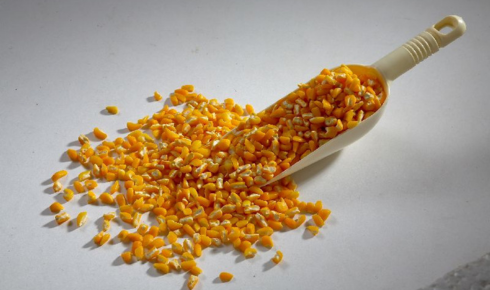When it comes to the global food and snack industry, one ingredient quietly drives consistency, flavor, and texture across countless products — Flaking Grits. These coarsely milled corn particles serve as the foundation for making cornflakes, snack foods, and even brewing adjuncts. Over the years, the demand for high-quality flaking grits has grown significantly, fueled by evolving food technology and a worldwide preference for corn-based products.
What Are Flaking Grits?
Flaking grits are coarse fractions of cleaned and de-germinated corn that are carefully milled to specific particle sizes. Unlike regular cornmeal or flour, they are processed through dry milling techniques to ensure consistency in size, moisture, and texture. This makes them ideal for producing breakfast cereals, extruded snacks, and other ready-to-eat food items.
The name “flaking” comes from their primary use — as a base ingredient for flaked cereals. The grits are steamed, cooked, and rolled into thin flakes before being toasted or roasted to create the crisp, crunchy cereals that millions enjoy each morning. Beyond cereals, Flaking Grits are also used in brewing, bakery mixes, and snack manufacturing due to their uniformity and clean corn flavor.
How Flaking Grits Are Produced
The production of Flaking Grits starts with selecting high-quality, non-GMO corn. The process begins with cleaning the kernels to remove impurities such as dust, stones, and husk fragments. After cleaning, the corn undergoes de-germination, a step that separates the germ and bran to achieve a pure endosperm product.
Next, the corn passes through advanced milling systems that control particle size distribution and minimize heat generation, which can affect flavor. Once milled, the grits are graded, polished, and screened to achieve uniformity. Maintaining consistent granulation is crucial, as it directly impacts the cooking behavior and texture of the final product.
Finally, the grits are carefully packed in moisture-resistant, food-grade packaging to preserve freshness and prevent contamination during storage and transport.
The Importance of Quality in Flaking Grits
Quality plays a central role in determining how flaking grits perform in food manufacturing. Even slight variations in granulation, moisture, or starch content can affect product consistency. Reputed producers follow stringent quality control measures, testing for color, purity, and microbial safety before dispatching the product.
High-quality flaking grits should be bright, free of black specks, and have a consistent texture that allows for even cooking and flaking. Manufacturers also prioritize low-fat content to enhance shelf life and prevent rancidity.
By maintaining strict production standards, suppliers ensure that every batch meets the expectations of cereal brands, bakeries, and industrial food processors worldwide.
Applications Across the Food Industry
Flaking grits are used across a wide spectrum of food applications. Their most notable use is in breakfast cereal production, where they form the base of cornflakes and multigrain flakes. When cooked, flattened, and toasted, they develop a golden color, crispiness, and flavor that consumers love.
They’re also used in extruded snack production — such as puffed corn snacks and coated chips — where their texture provides a light and crunchy bite. In breweries, flaking grits are used as a natural adjunct ingredient to produce lighter beers with a smooth finish.
Furthermore, the animal feed industry uses coarser flaking grits for nutritional value, as they provide digestible energy for livestock.
Global Demand and Market Growth
The worldwide demand for flaking grits continues to rise due to the growing popularity of ready-to-eat cereals and convenient snacks. Consumers are becoming more health-conscious, seeking foods that are natural, gluten-free, and rich in complex carbohydrates. Flaking grits meet these expectations perfectly, making them a preferred ingredient in modern food processing.
Manufacturers are also focusing on sustainability and traceability. Many now source corn from local farms, adopt energy-efficient milling technologies, and maintain eco-friendly packaging practices. These initiatives help reduce waste and enhance the overall value of the product.
Choosing the Right Supplier
For businesses in the food industry, sourcing high-quality flaking grits is critical. A reliable supplier should provide consistency in granulation, ensure compliance with food safety standards such as ISO and HACCP, and offer flexible packaging options for bulk buyers. Transparency in sourcing, quality certifications, and prompt delivery are also important factors that set trusted suppliers apart.
Final Thoughts
Flaking grits might not always make headlines, but they form the foundation of some of the most popular food products worldwide. From your morning bowl of cereal to your favorite crunchy snack, these golden granules define quality and taste.
Choosing the right Flaking Grits supplier ensures not just superior product performance but also contributes to the long-term success of any food manufacturing business. As global demand continues to grow, flaking grits remain the heart of innovation and nutrition in the modern food industry.

